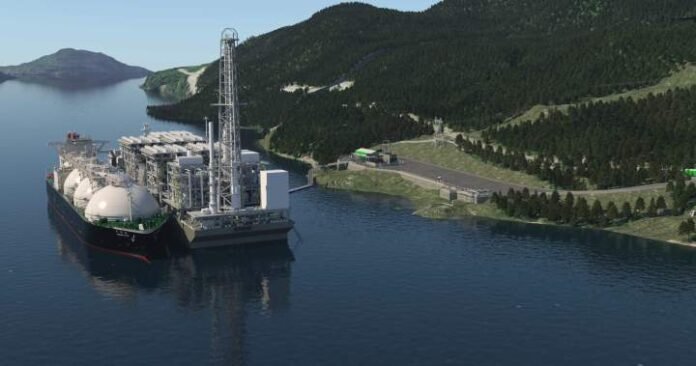The British Columbia government is contributing $200 million to the Cedar liquefied natural gas (LNG) facility on the province’s north coast.
The money will go towards tapping the $US3.4-billion project into B.C.’s power grid, allowing it to run on clean electricity rather than by burning natural gas.
“We’re going to keep B.C. moving forward, we’re going to keep jobs in every corner of this province, we’re going to do it in partnership with Indigenous people, we’re going to do it in a way that respects high environmental standards that all B.C. and Canadians expect us to do,” Premier David Eby said in Kitimat Tuesday afternoon.
The project, which is majority-owned by the Haisla First Nation in partnership with Pembina Pipeline Corporation, already received $200 million from the federal government earlier this year.

Get daily National news
Get the day’s top news, political, economic, and current affairs headlines, delivered to your inbox once a day.
The province says the money will go to building a new 287-kilovolt transmission line, a new substation, new distribution lines and nearshore electrification.

The province says electrifying the plant will make it among the lowest-emitting facilities of its kind.
“The economy requires more energy and if it’s not clean energy, we are going to go backwards on climate change, not ahead,” Energy Minister Adrian Dix said.
“The president of the United States has taken action to say to clean energy companies, ‘Get out of the United States.’ Well, we say come here.”
Haisla Elected Chief Maureen Nyce said the project will allow her nation to move ahead with sustainable development in accordance with their values.
“When Indigenous communities lead projects as owners, as is the case with Cedar LNG, we are able to ensure that these projects are developed in the most environmentally responsible manner, while generating revenues that enable us to protect our way of life and build long-term prosperity,” she said.
The plant will employ 500 workers during the peak construction period, and once activated the plant will create 100 full-time jobs.
The project is slated to be operational in late 2028.
© 2025 Global News, a division of Corus Entertainment Inc.









